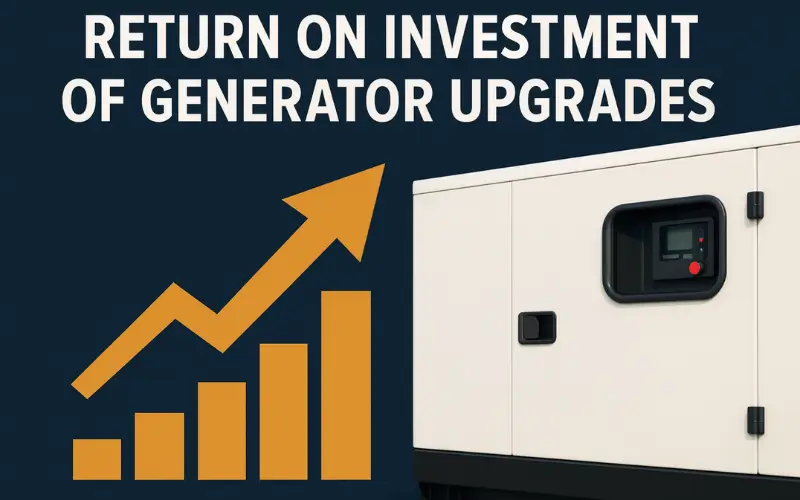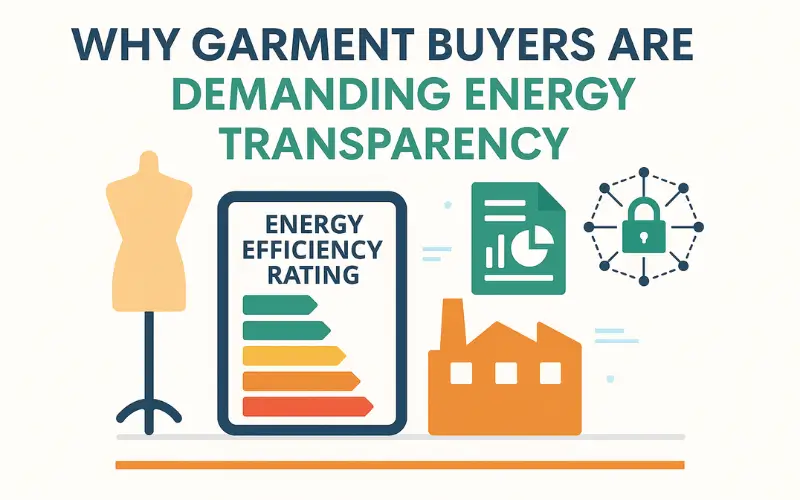Factories today are under more pressure than ever to stay competitive, efficient, and sustainable. One overlooked but incredibly powerful strategy to achieve these goals is conducting regular energy audits. While often viewed as a tool for reducing utility bills, energy audits go far beyond just energy savings—they are a gateway to enhanced factory productivity.
In simple terms, an energy audit is a systematic review of how energy is used in a facility. It pinpoints inefficiencies, identifies opportunities for improvement, and provides a clear roadmap for optimizing operations. But what’s often missed is how these improvements ripple through the entire production process—reducing machine downtime, improving equipment performance, and even boosting employee well-being.
This blog dives deep into how energy audits directly and indirectly elevate factory productivity. Whether you’re managing a garments unit in Dhaka or overseeing operations in a global manufacturing hub, this guide will show you how investing in an energy audit can pay off in ways you may not have expected.
In this post, you’ll learn:
- What an energy audit entails in an industrial setting.
- How audits identify hidden productivity bottlenecks.
- Real-world examples of factories improving output after audits.
- Tools, standards, and best practices to maximize impact.
What Is an Energy Audit in a Factory?
An energy audit in a factory is a structured assessment of how energy flows through a facility, how efficiently it’s being used, and where improvements can be made. It’s the foundation for strategic decision-making in both energy management and productivity enhancement.
Why Energy Audits Matter in Industry
Unlike residential audits, industrial energy audits are complex and technical. They don’t just aim to reduce electricity bills—they evaluate the entire operational ecosystem: machinery, HVAC systems, lighting, compressed air systems, thermal systems, boilers, chillers, and even production schedules. The goal is to uncover how energy inefficiencies affect both costs and production capacity.
Types of Energy Audits
There are generally three levels of audits, each with increasing depth and data requirements:
1. Walk-Through Audit (Preliminary Audit)
- A basic site inspection to identify obvious areas of energy waste.
- Low cost, quick execution.
- Ideal as a starting point or for smaller facilities.
2. General/Detailed Audit
- Combines physical inspection with utility data analysis and limited instrumentation.
- Identifies specific savings opportunities with approximate payback periods.
- Often used to create a prioritized energy action plan.
3. Investment-Grade Audit (IGA)
- Highly detailed and data-driven.
- Includes engineering analysis, real-time monitoring, cost-benefit projections.
- Used for budget planning, capital investment, or energy performance contracts.
Key Elements Assessed in an Industrial Energy Audit
- Electrical Systems: Motors, pumps, transformers, distribution losses.
- Thermal Systems: Boilers, chillers, heat recovery systems.
- Compressed Air Systems: Leaks, pressure drops, improper sizing.
- Lighting: Wattage, layout, controls, daylighting potential.
- Building Envelope: Insulation, windows, air leaks.
- Process Loads: Energy use in core production steps.
The Link Between Energy and Productivity
Energy audits don’t just identify what to fix—they often reveal how the factory operates as a system. For example:
- An inefficient air compressor might be increasing rework due to unstable pressure.
- Poor lighting could be reducing operator accuracy on quality checks.
- Waste heat might be affecting the cooling needs of adjacent production lines.
When these issues are resolved, the productivity gains often exceed the energy savings.
The Energy Audit Process in Factories (Step-by-Step)
Conducting an energy audit is not just a one-off inspection—it’s a structured process that combines engineering, data analysis, and business strategy. Each step plays a role in uncovering hidden inefficiencies that can be transformed into productivity gains.
1. Initial Consultation & Goal‑Setting
The audit begins with understanding the factory’s unique needs:
- What are the major energy-consuming processes?
- Are there frequent breakdowns or quality issues?
- What are the factory’s production goals and operational challenges?
This phase sets the scope and objectives of the audit—whether it’s purely for energy cost savings, reliability improvement, or overall productivity enhancement.
2. Site Survey & Data Collection
Next comes a comprehensive walkthrough of the facility. Energy auditors:
- Inspect equipment (motors, HVAC, chillers, compressors).
- Examine production lines, utility rooms, lighting layouts.
- Measure baseline consumption using meters, loggers, and sensors.
- Review historical utility bills (electricity, gas, water, steam).
3. Consumption Analysis & Benchmarking
Auditors now break down how energy is used across different systems:
- How much energy does each machine or process consume?
- Are there anomalies—e.g., excessive nighttime usage or peak load penalties?
- Is the facility above or below industry benchmarks?
This stage uses tools like:
- Sankey diagrams (energy flow mapping)
- Load profile charts
- Energy performance indices (e.g., kWh/unit of product)
4. Identifying Inefficiencies & Recommended Measures
Once energy patterns are clear, auditors identify and quantify inefficiencies:
- Oversized or underloaded motors
- Leaky compressed air systems
- Heat loss from boilers or steam lines
- Excessive lighting or old ballasts
- HVAC zones operating when not needed
Each inefficiency is matched with corrective actions:
- Upgrade to VFD motors
- Install insulation or automatic controls
- Introduce waste heat recovery systems
- Replace old lighting with LED + occupancy sensors
Each recommendation includes:
- Estimated cost
- Energy savings
- Productivity gains (e.g., reduced downtime, smoother process control)
- Payback period and ROI
5. Final Report, Cost Analysis & Action Plan
All findings are compiled into a comprehensive audit report that includes:
- A ranked list of recommended improvements
- Detailed cost-benefit analysis
- Implementation timelines
- Case references or standards (e.g., ISO 50002 audit guidelines)
- This report becomes the blueprint for factory leadership to take action.
6. Implementation & Monitoring
Energy savings and productivity improvements are only realized if actions are implemented. Many successful factories:
- Assign internal energy champions
- Monitor upgrades using Energy Management Systems (EMS)
- Conduct training and awareness sessions
Monitoring tools track:
- Energy usage before vs after improvements
- Machine uptime and failure rates
- Production efficiency metrics (units/hr, scrap rates)
Some even tie energy performance to KPIs for line managers or maintenance teams.
How Energy Audits Boost Factory Productivity
Many factory managers think of energy audits solely as tools for cutting utility bills. But in reality, the impact reaches far beyond cost savings. When energy inefficiencies are addressed, they often eliminate deeper operational problems—leading to smoother workflows, fewer breakdowns, and more consistent output.
Let’s explore the productivity advantages that energy audits unlock.
1. Reduced Downtime & Maintenance
One of the most direct links between energy audits and productivity is the early detection of failing or inefficient equipment:
- Motors running hot or underloaded
- Compressors working overtime due to system leaks
- Inadequate ventilation causing overheating in electrical panels
Fixing these issues extends equipment life and avoids unplanned shutdowns. When machines run more efficiently, they break down less, and the production schedule stays on track.
Result: More uptime, fewer emergency repairs, and lower maintenance costs.
2. Improved Process Reliability & Yield
Inconsistent energy supply—like voltage drops or unstable compressed air pressure—can lead to:
- Quality defects
- Rework or scrap
- Overcompensation in process controls
Energy audits stabilize these systems:
- Ensuring correct voltage and load balancing
- Fixing compressed air leaks or pressure drop zones
- Calibrating steam or thermal delivery systems
Result: Improved product consistency and reduced defect rates.
3. Cost Savings Reinvested into Production Upgrades
By implementing low-cost energy-saving measures, factories free up capital that can be reinvested in:
- New production equipment
- Staff training
- Maintenance tools
- Inventory management systems
Many factories report using audit-identified savings (often 10–20% of their energy bill) to fund productivity-improving automation.
Result: A continuous improvement cycle with compounded ROI.
4. Extended Equipment Life
When motors, HVAC systems, and thermal equipment are optimized, they operate at ideal conditions:
- Reduced wear and tear
- Fewer overheating incidents
- Smoother startup/shutdown cycles
This reduces the need for frequent overhauls and costly replacements.
Result: Lower capital expenditure and more stable production lines.
5. Enhanced Employee Comfort and Focus
Energy audits often identify inefficiencies in lighting, ventilation, and indoor temperature control. Poor lighting can cause:
- Eye strain
- Mistakes during inspections or assembly
- Decreased alertness during shifts
After implementing audit recommendations like LED lighting or zoned cooling:
- Employees feel more comfortable
- Attention and productivity improve
- Absenteeism may even decrease
Result: A healthier, more focused, and efficient workforce.
6. Strategic Energy Management
Energy audits are not one-time exercises. Leading factories integrate their audit findings into strategic energy management systems (EnMS):
- ISO 50001 certification
- Real-time energy dashboards
- Energy KPIs tied to operations
This embeds energy awareness into the core of production decision-making.
Result: Long-term productivity culture aligned with sustainability.
Quantifying Productivity Gains & ROI
Understanding the real value of energy audits requires going beyond abstract benefits and looking at measurable outcomes. By linking energy-saving initiatives to key performance indicators (KPIs), factory managers can quantify the return on investment (ROI) and make data-backed decisions that drive continuous improvement.
Let’s explore how factories calculate productivity gains from energy audits—and what the numbers reveal.
1. Tracking Key Productivity Indicators (KPIs)
When energy audit recommendations are implemented, changes are visible not only in energy bills but across multiple performance metrics:
| KPI | Before Energy Audit | After Energy Audit |
| Machine Downtime (hrs/month) | 28 hrs | 14 hrs |
| Energy Intensity (kWh per unit) | 3.5 kWh/unit | 2.7 kWh/unit |
| Scrap/Rework Rate | 7% | 3.5% |
| Maintenance Calls per Month | 18 | 8 |
| Output per Shift | 1,200 units | 1,450 units |
Improved uptime, quality, and throughput often follow audit-led interventions—even if production equipment remains the same.
2. Real-World Case Studies
Garments Factory – Dhaka, Bangladesh
- Problem: Excessive fuel consumption in boiler and poor air compressor efficiency.
- Audit Findings: Identified uninsulated steam lines and 18% leak rate in compressed air.
- Actions: Steam pipe insulation, VFD installation, compressor system upgrade.
Results:
- Energy cost reduced by 15%
- Daily production output increased by 9%
- Payback: 10.5 months
Automotive Components Factory – United States
- Problem: Frequent motor breakdowns and unstable voltage.
- Audit Findings: Oversized motors and inefficient load balancing.
- Actions: Installed right-sized motors and power factor correction.
Results:
- $315,000 annual savings
- 20% increase in operational uptime
- Payback: 2.1 years
Food Processing Plant – Malaysia
- Problem: Cooling system overuse and inconsistent indoor temperatures affecting packing line.
- Audit Findings: Outdated HVAC system running non-stop.
- Actions: Introduced zoning and programmable thermostats.
Results:
- Energy consumption down by 12%
- Packing error rate reduced by 30%
- Improved staff satisfaction and productivity
3. Estimating ROI from Audit Recommendations
Most professional audit reports include ROI calculations for each recommendation. The formula is:
ROI (%) = (Annual Savings / Implementation Cost) × 100
For example:
- Annual savings: $12,000
- Cost of improvement: $8,000
- ROI = (12,000 / 8,000) × 100 = 150%
In manufacturing environments, simple payback periods typically range from 6 months to 2.5 years, depending on the intervention.
4. Compounding Productivity Over Time
Energy audit improvements tend to accumulate benefits over time:
- Lower maintenance → fewer stoppages
- Reduced rework → less material waste
- Stable systems → better long-term planning
This compounding effect improves a factory’s OEE (Overall Equipment Effectiveness) and positions it for future growth.
Tools & Standards That Support Productivity Through Energy Audits
Energy audits unlock insights—but to sustain and scale productivity gains, factories need tools and standards that support long-term energy and process management. This section highlights the key technologies, frameworks, and systems that help factories turn energy efficiency into a permanent competitive advantage.
1. Energy Management Systems (EnMS) & ISO 50001
ISO 50001 is the global gold standard for structured energy management. It provides a proven framework for:
- Monitoring energy usage
- Setting performance targets
- Engaging all levels of staff
- Implementing a cycle of continuous improvement (Plan-Do-Check-Act)
Factories using ISO 50001 report:
- Average energy savings of 10–30%
- Improved process control
- Easier compliance with environmental and CSR goals
Result: Energy and productivity improvements are integrated into everyday operations, not isolated projects.
2. Real-Time Monitoring Systems & Smart Sensors
Modern energy monitoring tools do more than log usage—they analyze performance in real-time:
- Smart meters track power, gas, water, and steam by department or machine.
- Sensors detect load imbalances, pressure fluctuations, or heat losses.
- Dashboards display KPIs like energy intensity, uptime, and anomalies.
Industrial Internet of Things (IIoT) platforms make this possible:
- Enable predictive maintenance (before failure occurs)
- Alert operators to abnormal conditions
- Drive faster decision-making
Result: Real-time visibility into factory performance leads to more agile and informed operations.
3. Compressed Air Leak Detection Tools
Compressed air systems can account for up to 30% of energy use—and leaks are a common hidden drain.
Tools used in audits:
- Ultrasonic leak detectors
- Flow meters
- Pressure loggers
Post-audit improvements (e.g., fixing leaks, installing VFDs) have shown:
- Up to 40% reduction in compressor energy use
- Smoother pneumatic tool performance
- Less equipment wear and more consistent cycle times
Result: Process reliability increases while energy cost drops.
4. Thermal Imaging & Infrared Cameras
Used to detect:
- Electrical hot spots
- Insulation failures
- Steam leaks
- Motor and bearing overheating
Thermal scans are non-invasive and often part of advanced audits. They help:
- Prevent unexpected shutdowns
- Ensure optimal thermal comfort (critical in garments & food industries)
Result: Early detection = fewer interruptions and more stable output.
5. Industrial Assessment Centers (IACs)
In countries like the U.S., IACs supported by the Department of Energy provide free or subsidized energy audits for small and mid-sized factories.
Services include:
- On-site energy and productivity analysis
- Hands-on student-led assessments
- Reports with cost-saving recommendations
Similar programs exist globally under names like:
- Energy Efficiency Hub (EU)
- Sustainable and Renewable Energy Development Authority – SREDA (Bangladesh)
Result: Factories without large internal teams can still access high-impact audit support.
Best Practices for Implementing Energy Audits
Conducting an energy audit is only half the battle. The real value comes from how well audit recommendations are implemented and sustained. Many factories conduct audits but fail to act, leaving productivity gains unrealized.
Here are the key practices that ensure energy audits translate into measurable improvements.
1. Build an Audit-Ready Team
Success starts with having the right people involved:
- Energy Manager or Coordinator: Oversees the audit and implementation.
- Cross-Functional Team: Includes maintenance, operations, procurement, and quality assurance.
- Top Management Buy-In: Ensures that audit recommendations receive attention, funding, and urgency.
Result: Fewer bottlenecks in implementing changes, better alignment across departments.
2. Prioritize Quick Wins & Low-Cost Measures
Start with changes that:
- Cost little to implement
- Have fast payback (< 12 months)
- Are non-disruptive to operations
Examples:
- Fixing compressed air leaks
- Replacing outdated lighting
- Improving insulation
- Shutting off idle equipment
These “quick wins” build trust in the audit process and free up budget for deeper improvements.
Result: Early momentum, higher staff confidence, and visible impact.
3. Schedule Regular Audits and Reviews
One-time audits provide a snapshot—but continuous auditing ensures factories adapt to changing processes, production volumes, or seasonal demands.
Best practices:
- Perform internal mini-audits every 6–12 months.
- Review key KPIs (e.g., energy per unit, downtime, rework rate) quarterly.
- Revisit baseline data annually and update the action plan.
Result: A dynamic, evolving energy strategy that scales with your factory’s growth.
4. Invest in Training and Energy Culture
Audit success often depends on people:
- Train maintenance teams on energy-efficient operations.
- Hold workshops on leak detection, lighting use, and system scheduling.
- Empower floor staff as “energy champions” who identify and report issues.
Use visual cues:
- Post energy performance dashboards
- Label equipment with energy-saving tips
- Share monthly savings reports
Result: Employee engagement rises, and energy-smart behavior becomes habitual.
5. Leverage Incentives & Financing Options
In many regions, government agencies, banks, and donor programs offer:
- Energy audit subsidies
- Low-interest loans for green upgrades
- Tax incentives for energy-efficient equipment
Examples:
- SREDA (Bangladesh) offers energy efficiency support for SMEs.
- UNIDO and IDCOL provide industrial energy management training and finance schemes.
- Partnering with ESCOs (Energy Service Companies) is another option:
- No upfront cost—payment based on realized savings
Result: Budget is no longer a barrier to implementing impactful changes.
6. Integrate Audit Findings into Long-Term Strategy
Audit data should feed into:
- Capital expenditure planning
- Preventive maintenance schedules
- Quality improvement initiatives
- Lean manufacturing strategies
When audit results are treated as strategic assets, energy efficiency and productivity become mutually reinforcing priorities.
Result: Long-term resilience, sustainability, and operational excellence.
Challenges & Solutions in Implementing Energy Audits
While energy audits promise significant gains in both efficiency and productivity, the path to successful implementation isn’t always smooth. Many factories—especially small and mid-sized ones—encounter roadblocks that delay or dilute the benefits.
Let’s explore the most common challenges and practical solutions to help ensure your audit doesn’t gather dust on a shelf.
1. Challenge: Limited Budget for Implementation
Even when audits identify valuable savings opportunities, factories often struggle to allocate funds for upgrades—especially if capital is tied up in production equipment or raw materials.
Solution:
- Prioritize low-cost, high-impact measures with fast payback.
- Leverage financing programs (green loans, ESCO partnerships, donor grants).
- Explore government incentives (e.g., Bangladesh’s SREDA, IDCOL, or UNIDO programs).
- Use cost savings from early wins to fund future phases.
2. Challenge: Lack of Technical Expertise
Smaller factories may not have internal energy specialists or engineers trained to interpret audit findings or implement solutions.
Solution:
- Partner with certified external energy auditors or consultants.
- Upskill existing maintenance and utility staff with short energy management courses.
- Tap into free or subsidized programs like Industrial Assessment Centers (IACs), UNIDO EnMS support, or university-led programs.
3. Challenge: Resistance to Change
Staff may be hesitant to adopt new practices or skeptical of changes that alter production routines, especially if the benefits aren’t immediately visible.
Solution:
- Involve teams early in the audit process to create buy-in.
- Appoint “energy champions” from within the shop floor.
- Communicate successes regularly (e.g., post charts showing energy saved or downtime reduced).
- Link energy improvements to familiar benefits: fewer breakdowns, cooler work environments, better lighting.
4. Challenge: Inadequate Data or Monitoring Systems
Factories may not have the meters, sensors, or reporting tools needed to track baseline consumption or validate improvements.
Solution:
- Start small with portable loggers or handheld tools for diagnostics.
- Gradually install smart meters on major energy systems (e.g., compressors, boilers, lighting circuits).
- Use free or low-cost energy dashboard tools or even Excel to begin monitoring.
5. Challenge: Audit Results Are Not Acted On
It’s surprisingly common for audit reports to be shelved due to lack of ownership, unclear next steps, or leadership changes.
Solution:
- Assign a dedicated energy coordinator or committee.
- Create a clear implementation roadmap with timelines, budgets, and assigned responsibilities.
- Set up monthly review meetings to track progress, discuss barriers, and celebrate wins.
Conclusion: Unlocking Factory Productivity Through Energy Audits
Energy audits are far more than a tool for cutting energy bills—they are a strategic gateway to boosting factory productivity, enhancing equipment reliability, and improving workforce well-being. By systematically uncovering inefficiencies and providing actionable insights, audits empower factories to streamline operations, reduce downtime, and optimize resource use.
From identifying leaky compressed air systems to improving lighting and thermal comfort, the ripple effects of an energy audit extend deep into production quality and output. When paired with the right tools, standards, and a culture committed to continuous improvement, energy audits become a cornerstone of operational excellence.
For factory managers and decision-makers, the message is clear: invest in energy audits not just to save money but to unlock new levels of productivity and competitiveness.
The journey begins with one step — scheduling your first or next energy audit—and building the roadmap to a more efficient, productive future.
Frequently Asked Questions (FAQs)
1. What is the difference between preliminary and investment-grade energy audits?
Preliminary audits are quick assessments to identify obvious energy savings with minimal data, while investment-grade audits are detailed, data-driven analyses used for major capital decisions.
2. How often should factories conduct energy audits?
Factories typically conduct energy audits every 1 to 3 years, with smaller follow-up audits or monitoring done internally every 6–12 months to maintain improvements.
3. What is the typical ROI and payback period for energy audit recommendations?
ROI varies by measure but commonly ranges from 50% to 200%, with payback periods from 6 months to 2.5 years, depending on the complexity and cost of improvements.
4. Can small factories benefit from energy audits without dedicated energy managers?
Yes, small factories can benefit by engaging external consultants, leveraging subsidized audit programs, and training existing staff to take ownership of energy management.
5. How do energy audits directly impact production quality and output?
By identifying and fixing energy inefficiencies, audits improve equipment reliability, stabilize processes (like compressed air pressure), and enhance workplace conditions—leading to fewer defects, less downtime, and higher output.




